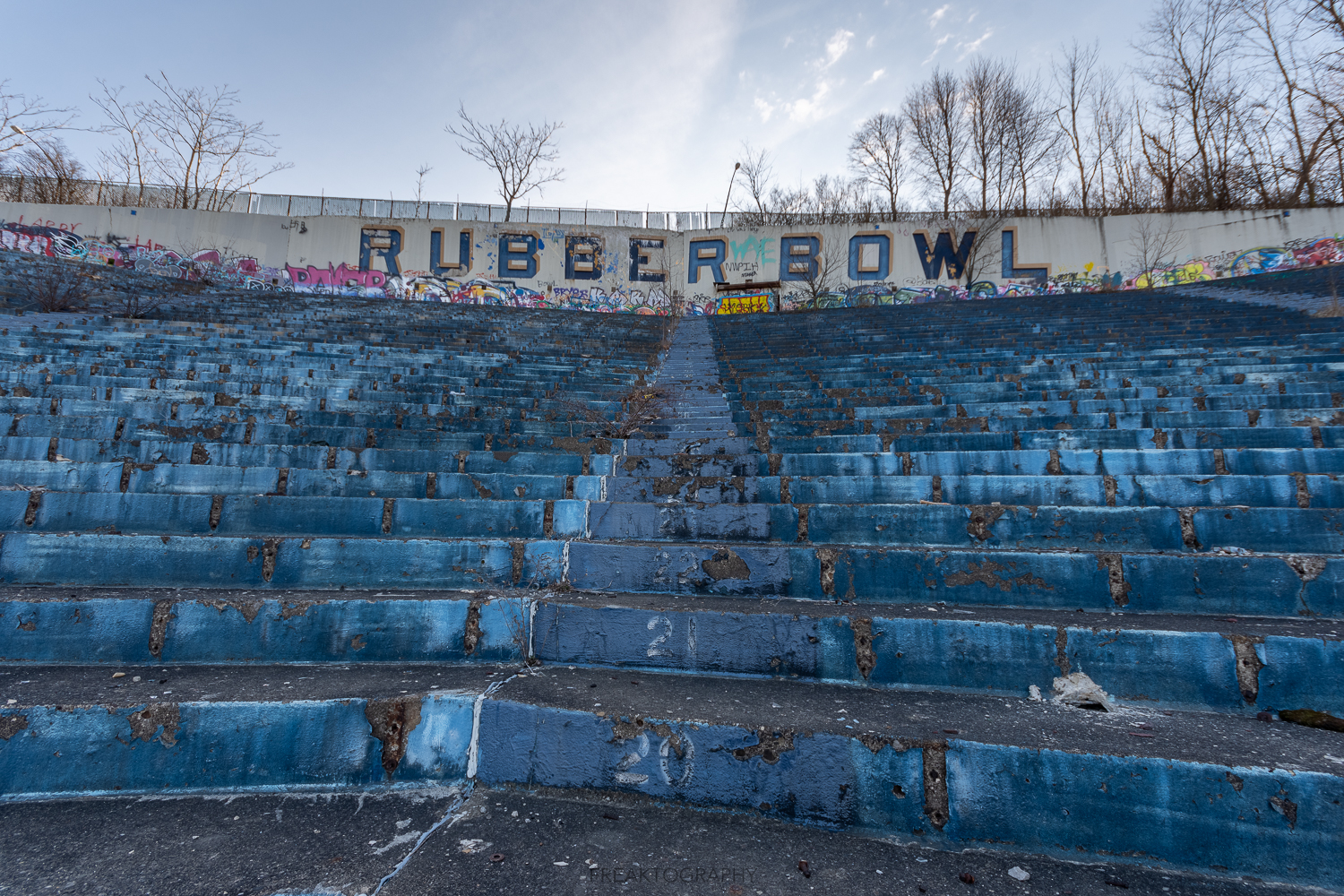Exploring the ABANDONED Akron Ohio Rubber Bowl Football Stadium
The story begins in the early 20th century when the Rubber City, Akron, was a thriving hub of rubber manufacturing. The city’s economic boom laid the groundwork for a unique and ambitious project – the creation of a stadium that would not only serve as a sports venue but also as a symbol of Akron’s industrial prowess.
In 1939, construction of the Akron Rubber Bowl commenced. Built by the Works Progress Administration (WPA) as part of Franklin D. Roosevelt’s New Deal initiatives, the stadium was a monumental undertaking that aimed to provide jobs during the Great Depression while also offering a state-of-the-art facility for the community.
Fast forward to August 1940, and the Rubber Bowl proudly opened its gates to the public. Its unique name derived from Akron’s association with the rubber industry, the stadium quickly became a focal point for the city’s residents, hosting sports events, concerts, circuses, and community gatherings.
The Rubber Bowl became synonymous with football, serving as the home field for the Akron Zips football team. Over the years, it witnessed thrilling victories, heart-wrenching defeats, and the camaraderie that defines the spirit of collegiate athletics.
Beyond sports, the Rubber Bowl echoed with the sounds of music, hosting legendary concerts that drew crowds from far and wide. From The Rolling Stones to Simon and Garfunkel to Black Sabbath, Bob Dylan, Bon Jovi and so many more, the stadium’s stage saw performances that have become etched in the annals of music history.
However, as time passed, the Rubber Bowl faced its own challenges. Aging infrastructure and changing preferences led to a decline in its use. Despite several attempts to revitalize the stadium, it closed its doors in 2008.
Akron announced on September 22, 2017, that the stadium would be demolished. Demolition began in 2018 with the scoreboard and the western portion of the stadium which included the press box, being razed, while the east and south tiers, which are built into the adjacent hill, remaining.
The portion built into the hillside supported George Washington Boulevard, and removal could potentially cause the roadway to collapse.
In 2023, the remainder of the stadium was demolished with the hillside portion of the stadium reinforced with concrete to form a retaining wall for the roadway above and transform the structure into a grassy hill.
Today, the Akron Rubber Bowl stood as a symbol of a bygone era, a testament to the resilience and spirit of a community that thrived in the heyday of industrial America. While the echoes of cheers and music may have faded, the memories forged within those concrete walls remain alive, reminding us of a time when the Rubber Bowl was more than just a stadium – it was a gathering place for dreams and aspirations.
